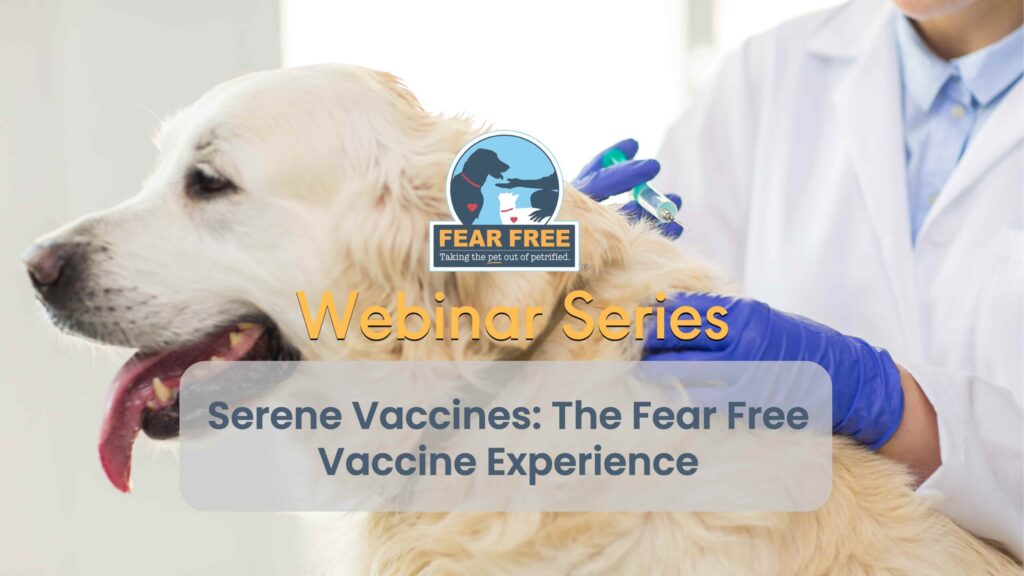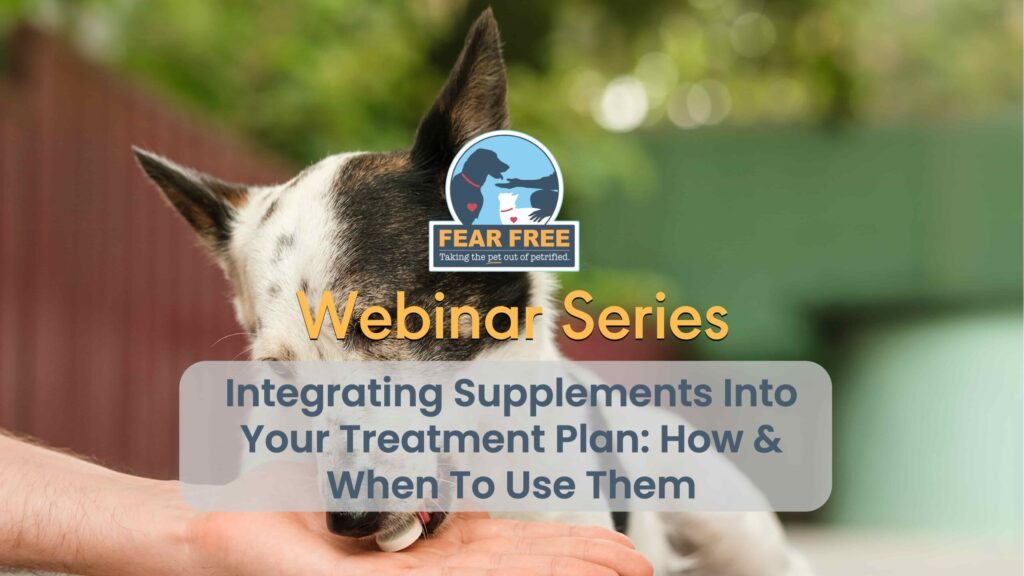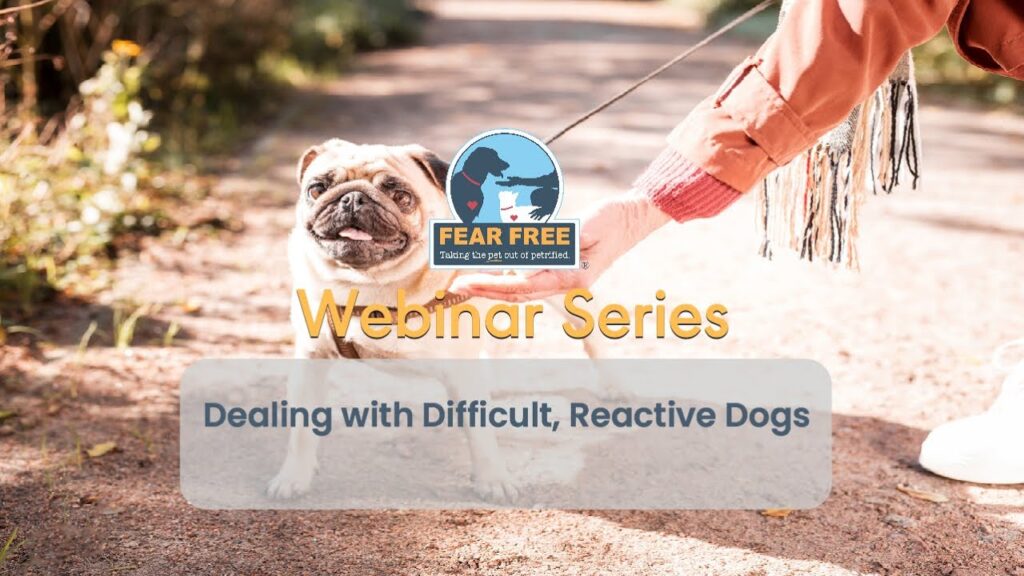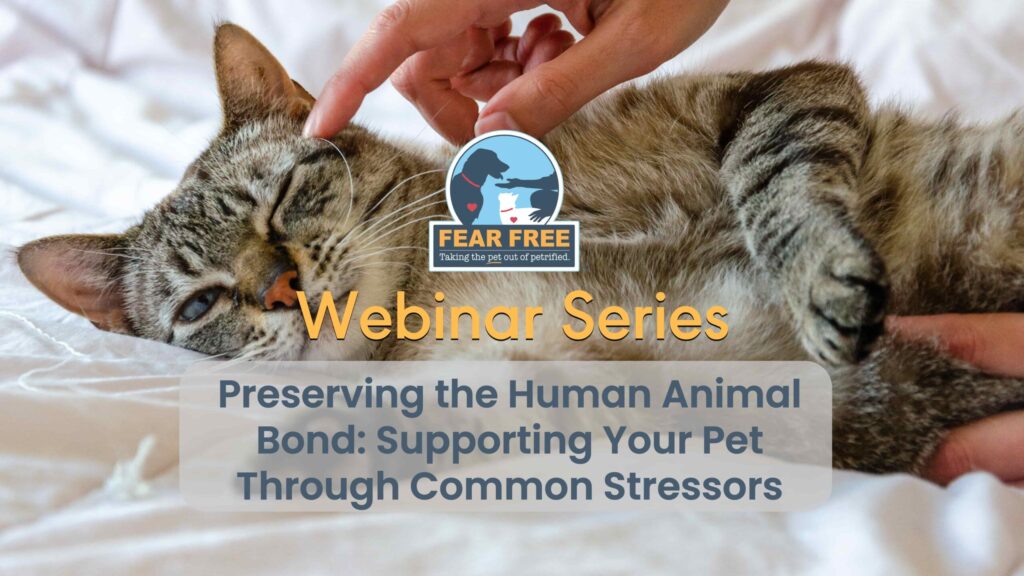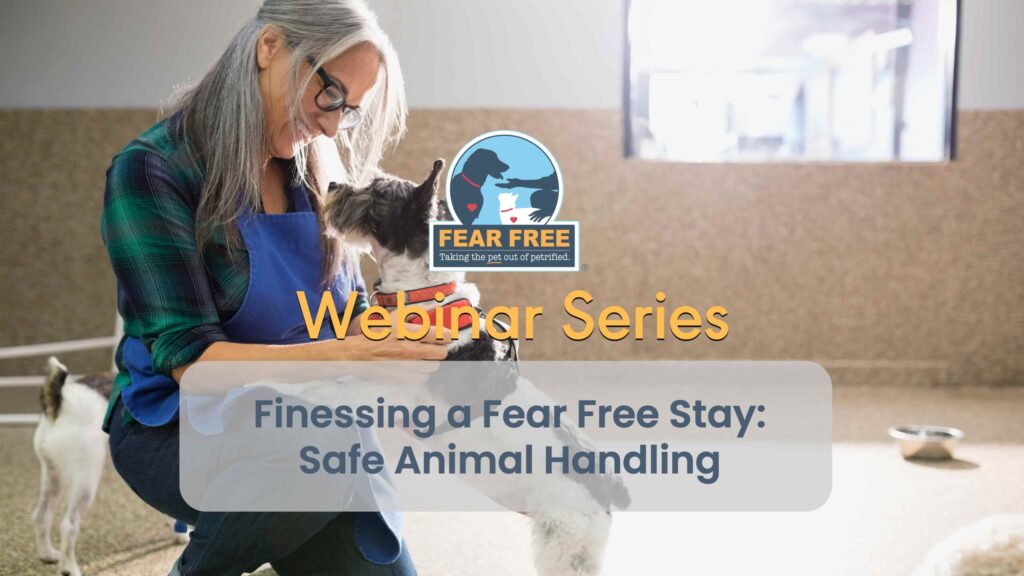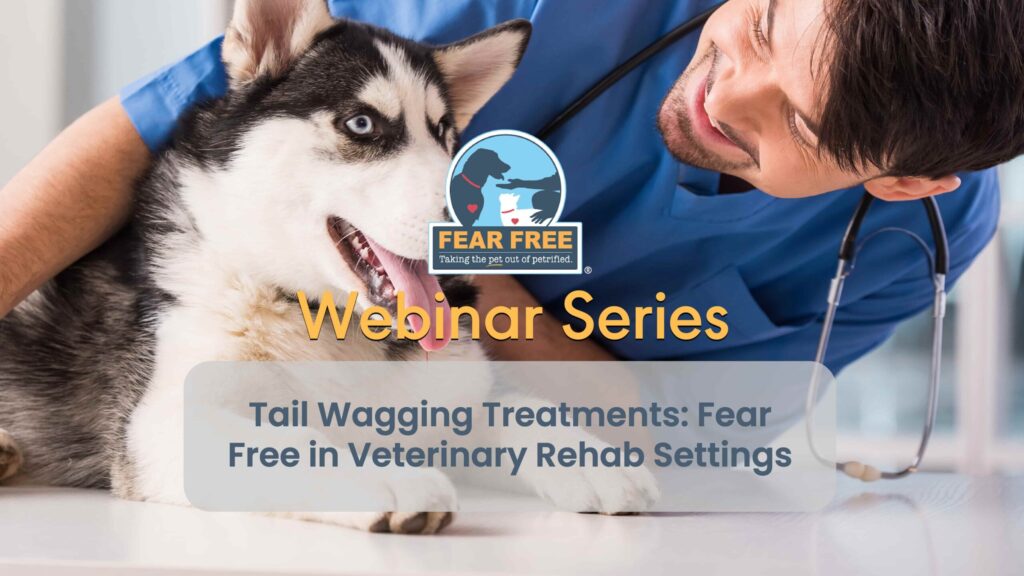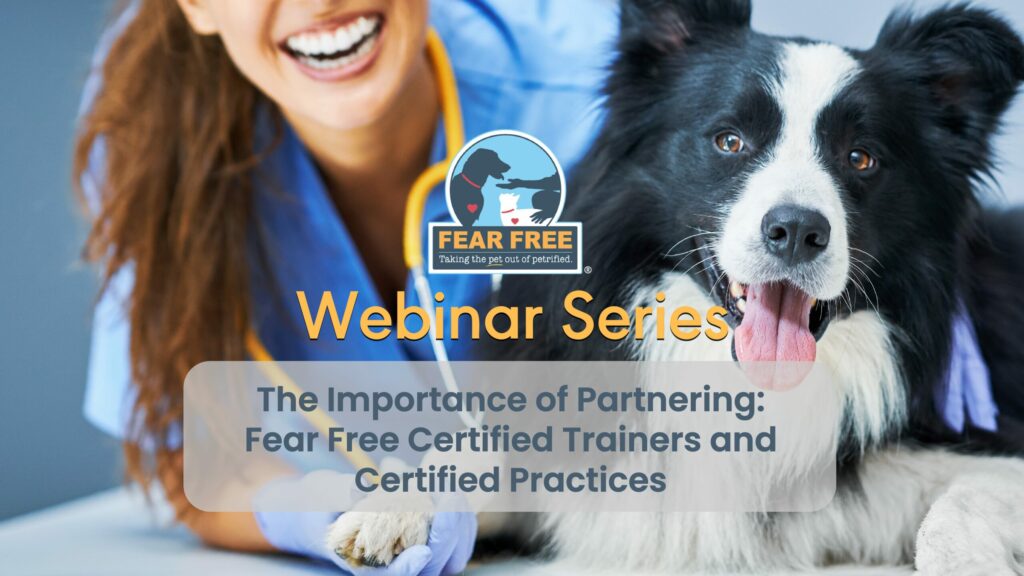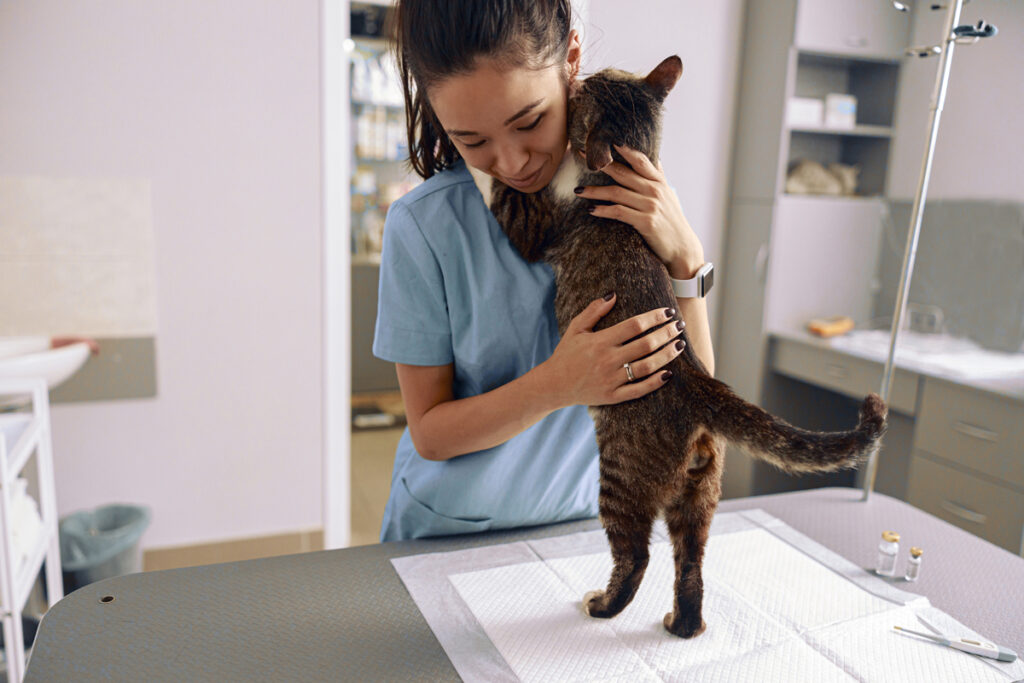
By Julie Liu, DVM
At least once a day, I see a high FAS patient. While I don’t always know their detailed backstory, the alerts on their patient files are like a roadmap to how they got there, as a “wiggly” puppy transforms into an adolescent that “may urinate” to a 3-year-old who’s a “CAUTION, WILL BITE!!!” Some days it seems like every pet has an FAS score of 4 or 5, and for Fear Free Certified Professionals, those days can be both emotionally and physically exhausting. It’s even more disheartening when we encounter ethical quandaries such as a pet parent who’s not on board with our Fear Free plan for their highly stressed pet. These situations are common, and according to psychotherapist and compassion fatigue expert Dr. Elizabeth Strand, moral stress is the number-one contributor to compassion fatigue in vet med1.
So what do we do with these high FAS patients? How do we care for their emotional and physical wellness, while also caring for our own wellbeing and balancing the needs of the pet parent? Flexibility, communication, and supporting the Fear Free team culture are key to approaching these challenging cases.
After becoming Fear Free certified, I started realizing that a patient would be a lot less stressed if I approached the interaction like jazz–with a general sense of where it might go, but incorporating improvisation and responding to what the pet was communicating at that moment. This may mean giving the pet a brief break during handling to allow de-escalation, or even backing off completely on what I was originally trying to accomplish. Fear Free handling is a dialogue, not a monologue. When handling a patient with high FAS, a few other guiding principles can help:
- Location, location, location. When handling any pet, try to choose the area where the pet prefers to be and is most comfortable. There are multiple places where a pet can be handled other than an exam table, such as the floor, on a lap, on the bench, or in the bottom of their cat carrier. In general, many pets with high FAS also do better with the owner present.
- Give every pet a sense of choice and control where possible. Encourage voluntary movement by calling the pet using a happy voice, asking the owner to call them over, or luring them to move of their own free will with a treat or toy. Many dogs also know cues for sit and down, so instead of pushing a dog’s rear end down and pulling their legs out to get them sternal, ask or lure the dog to a sit and down. Respect the cat’s choice to stay in the carrier and access them by removing the top of the carrier and covering them with a towel to facilitate hiding. When restraining a pet, especially a high FAS pet, allowing them to stay in the position they prefer goes miles toward keeping them calm, whether it’s allowing a dog to stand instead of sit for a jugular draw or allowing a cat’s front end to remain sternal instead of forcing them into full lateral to reach the medial saphenous.
- Less is more. Use the minimum number of people needed and the least amount of restraint needed while staying safe. The more hands on a pet and the more people crowded around them, the more likely they are to become stressed.
- Prevent and treat for pain. Pain contributes to FAS and vice versa, and as mentioned in a 2022 Fear Free roundtable3, pain and fear are “two sides of the same coin.” Dull needles also hurt more, so try to make it common practice during sample collection to not reuse needles. During unsuccessful blood draws, I often see people pulling the needle out of a pet’s skin, re-palpating the vein, and then pushing that same, microscopically shredded needle back into that pet’s skin for a second or third attempt as the pet gets more and more stressed.
- Sedate early, not as a last resort. With many high FAS pets, you will often reach a limit for what PVPs can accomplish. Injectable sedation may be the best way to help minimize FAS. Sedating earlier when the patient is calmer will be safer for the pet and likely allow you to use lower doses of anesthetic drugs. Familiarizing yourself with Fear Free in-clinic sedation protocols, lowering the charge for sedation to get client buy-in ($70 is more palatable than $140), and getting staff members comfortable with sedation/monitoring will also prove invaluable. Another way to approach stressful procedures for high FAS pets is to tack them onto an already-scheduled procedure involving general anesthesia. Depending on the patient’s needs, these could include shaving a matted cat, microchipping, trimming or dremeling nails, performing a cystocentesis, aspirating a growth in a sensitive location, expressing anal glands, or performing an orthopedic exam/radiographs. For more info on Fear Free in-clinic sedation, check out Fear Free Level 1 module 7b8, Fear Free Level 3 module 19, and these other Fear Free resources10, 11, 12, 13.
This article was reviewed/edited by board-certified veterinary behaviorist Dr. Kenneth Martin and/or veterinary technician specialist in behavior Debbie Martin, LVT.
Julie Liu is a veterinarian and freelance writer based in Austin, Texas. In addition to advocating for fear free handling, she is passionate about felines and senior pet care. Learn more about Dr. Liu and her work at www.drjulieliu.com.
Continue learning about managing patients with high FAS through Part Two, Part Three & Part Four of this series.
Want to learn more about Fear Free? Sign up for our newsletter to stay in the loop on upcoming events, specials, courses, and more by clicking here.
Resources
- Moral stress the top trigger in veterinarians’ compassion fatigue | American Veterinary Medical Association
- https://journals.sagepub.com/doi/full/10.1177/1098612X221128760
- https://fearfreepets.com/pain-and-fear-two-sides-of-the-same-coin/
- https://icatcare.org/our-campaigns/pledge-to-go-scruff-free/
- https://fearfreepets.com/treat-ladder/
- https://fearfreepets.com/top-10-treats/
- https://fearfreepets.com/wp-content/uploads/delightful-downloads/2019/01/Keep-Calm-and-Muzzle-On-1.pdf
- https://fearfreepets.com/courses/fear-free-certification-program/
- https://fearfreepets.com/courses/fear-free-certification-level-3/
- https://fearfreepets.com/fas-spectrum/
- https://fearfreepets.com/wp-content/uploads/delightful-downloads/2020/08/Dog-Sedation-Pain-Algorithm-2020.pdf
- https://fearfreepets.com/wp-content/uploads/delightful-downloads/2020/08/Cat-Sedation-Pain-Algorithm-2020.pdf
- https://fearfreepets.com/calming-pet-owners-concerns-sedation/
- https://www.felinegrimacescale.com/
- https://fearfreepets.com/courses/fear-free-level-2/
- https://www.avma.org/resources-tools/practice-management/communicating-clients-using-right-language-improve-care
- https://fearfreepets.com/resources/fear-free-store/fear-anxiety-and-stress-spectrum-cat/
- https://fearfreepets.com/resources/fear-free-store/fear-anxiety-and-stress-spectrum-dog/
- Moses L, Malowney MJ, Wesley Boyd J. Ethical conflict and moral distress in veterinary practice: A survey of North American veterinarians. J Vet Intern Med. 2018 Nov;32(6):2115-2122.
- https://www.youtube.com/watch?v=ExaL-pp9Kok&t=1531s
